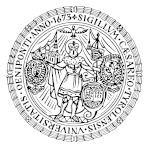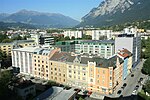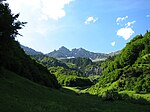Medical University of Innsbruck
2004 establishments in AustriaAustrian building and structure stubsBuildings and structures in InnsbruckEducation in Tyrol (state)Educational institutions established in 2004 ... and 3 more
Europe university stubsMedical schools in AustriaUniversities and colleges in Austria
The Medical University of Innsbruck (German: Medizinische Universität Innsbruck) is a university in Innsbruck, Austria. It used to be one of the four historical faculties of the Leopold-Franzens-Universität Innsbruck and became an independent university in 2004.
Excerpt from the Wikipedia article Medical University of Innsbruck (License: CC BY-SA 3.0, Authors).Medical University of Innsbruck
Innerkoflerstraße, Innsbruck Innenstadt (Innsbruck)
Geographical coordinates (GPS) Address Website Nearby Places Show on map
Geographical coordinates (GPS)
| Latitude | Longitude |
|---|---|
| N 47.262222222222 ° | E 11.385555555556 ° |
Address
Universitätsklinik Innsbruck
Innerkoflerstraße
6020 Innsbruck, Innenstadt (Innsbruck)
Tyrol, Austria
Open on Google Maps








